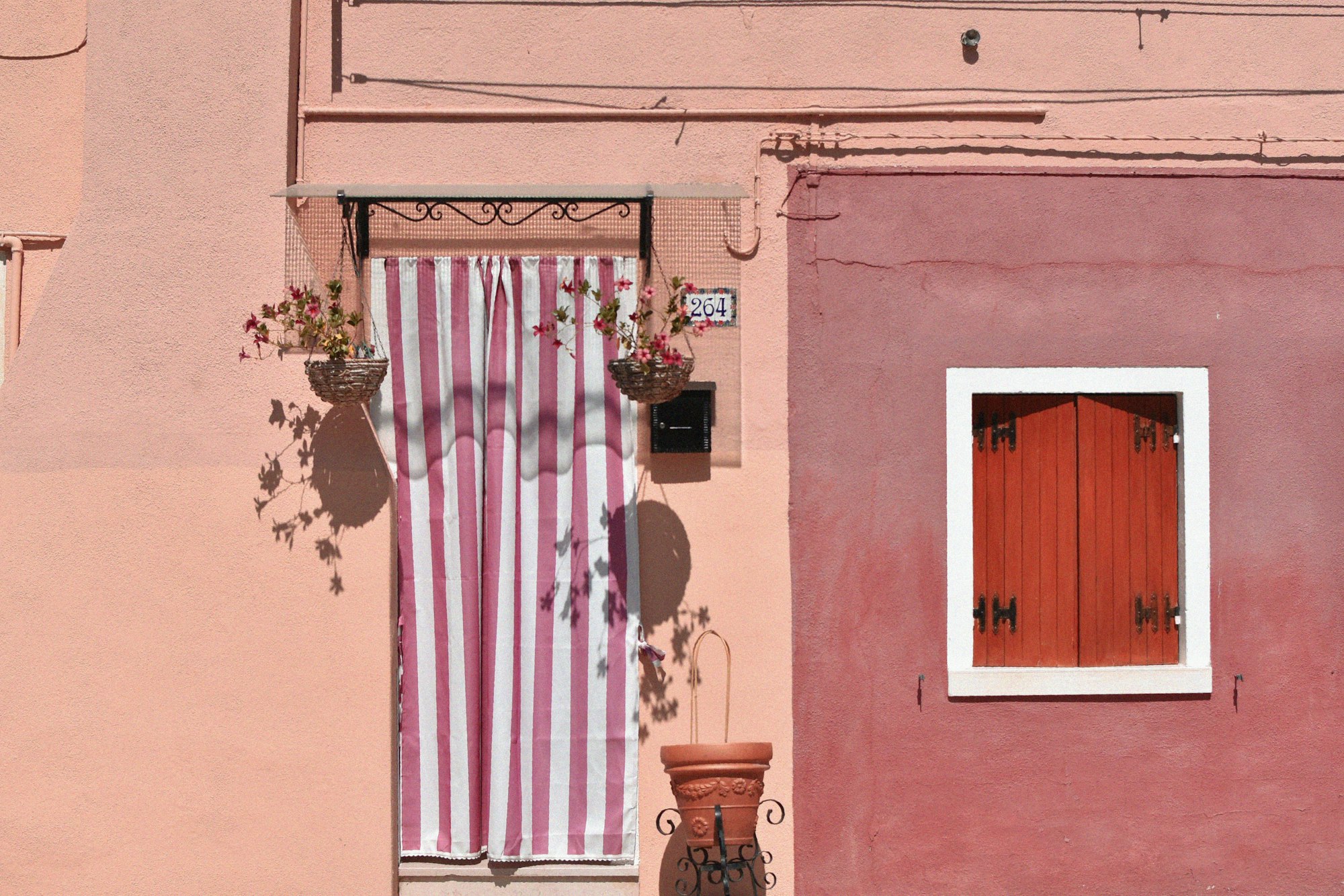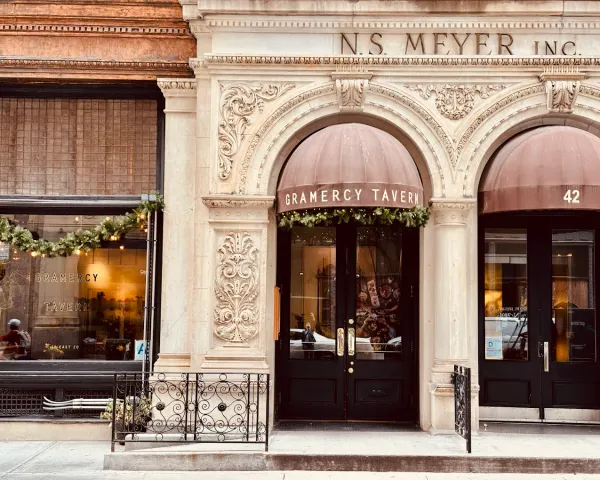Digital Detox Retreat: Your Ultimate Guide to Off-Grid in Scandinavia
Digital detox retreat experiences have emerged as the antidote to screen fatigue. Here are some of the best accommodations to disconnect and reconnect with nature.
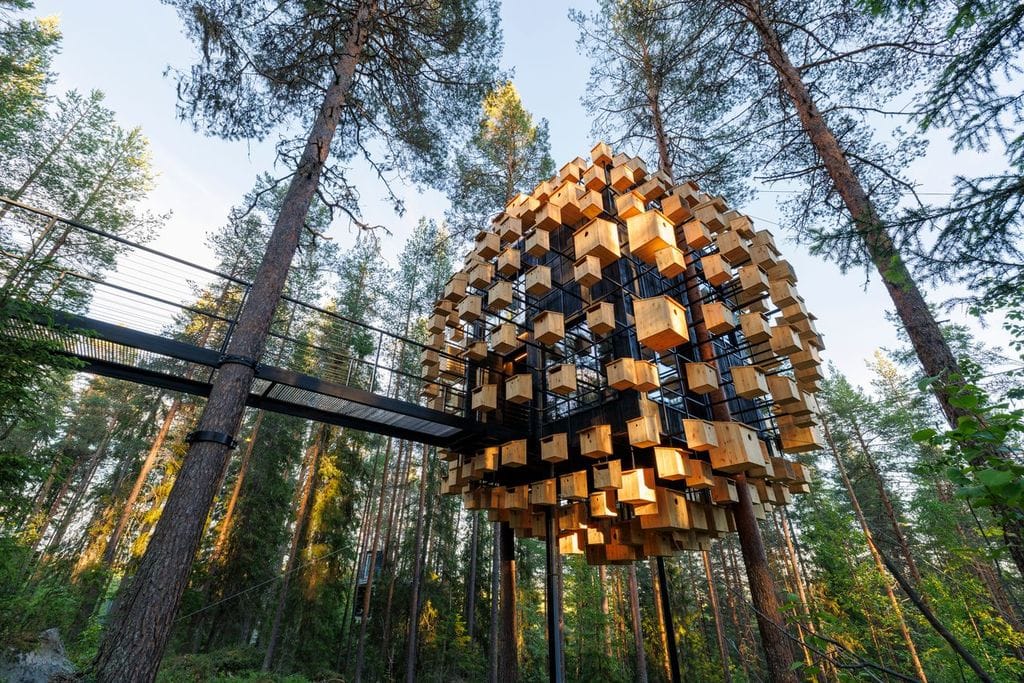
The demand for authentic digital detox retreat experiences continues to surge across Scandinavian countries, making them premier destinations for tech-free luxury getaways.
These kinds of retreats first gained prominence in the early 2010s, initially emerging from wellness centers in California before spreading globally. Today, they're typically located in remote, pristine natural settings—from mountain cabins to coastal hideaways—where Wi-Fi signals are intentionally limited or absent entirely.
The next carefully curated escapes offer guests the opportunity to disconnect from digital devices while reconnecting with nature, themselves, and meaningful human connections.
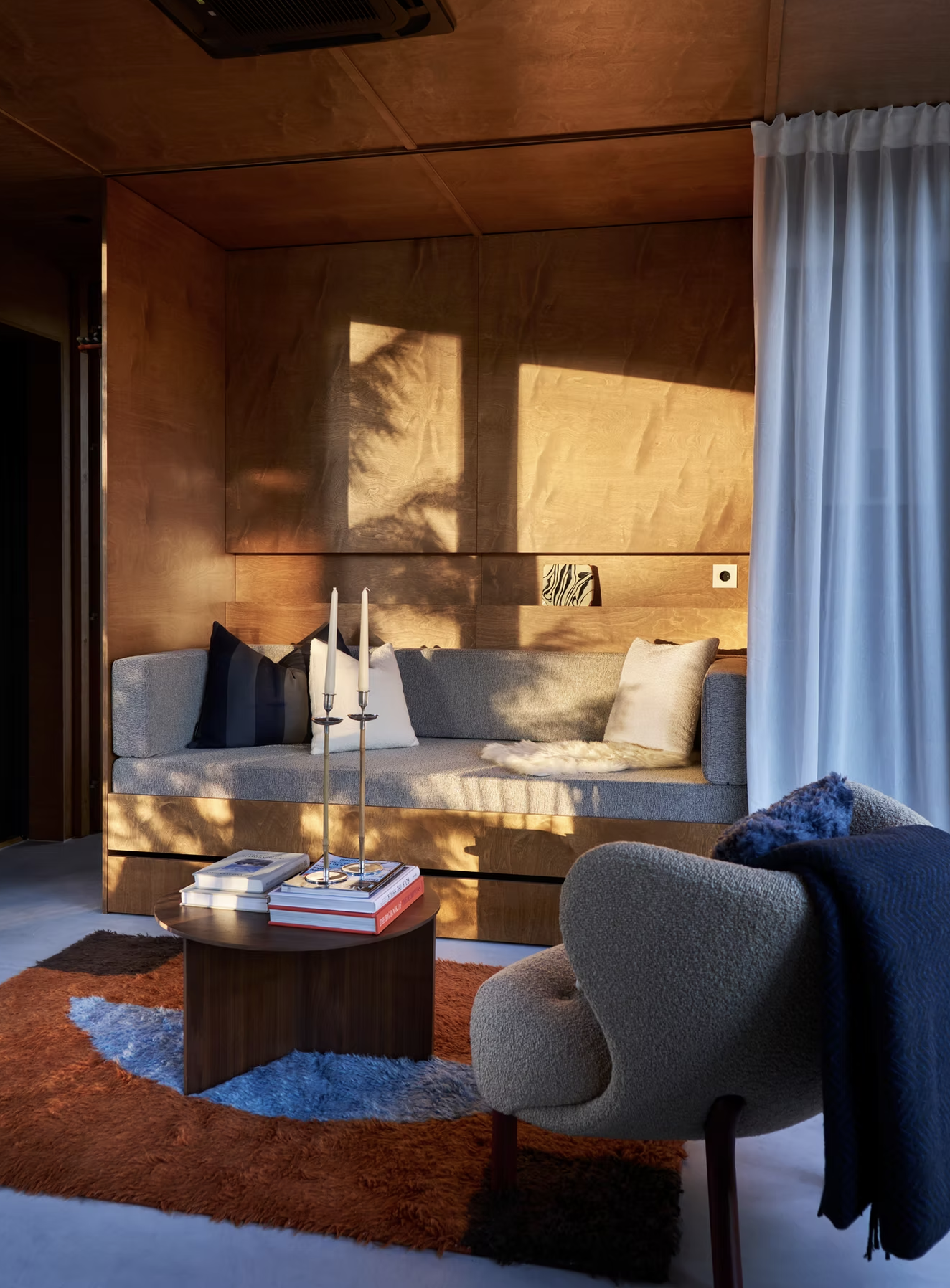
Why Choose Scandinavia for your Digital Detox Retreat?
The United States leads in market spending, followed by European countries, particularly in Scandinavia, where the concept aligns perfectly with cultural values of lagom (balance) and hygge (cozy contentment).
Here are some reasons why Scandinavian countries offer unparalleled digital detox retreat experiences:
- Natural Beauty and Remoteness: from Swedish Lapland's endless forests to Norway's fjords and Denmark's peaceful countryside. These destinations offer a genuine escape from urban connectivity.
- Cultural Alignment: The concept of friluftsliv (outdoor life) is deeply ingrained in Nordic society, making these countries natural leaders in wellness tourism.
- Seasonal Experiences: summer's midnight sun for extended outdoor activities, winter's Northern Lights for contemplative evenings, and spring/autumn's dramatic seasonal transitions for reflection and renewal.
- Sustainable Tourism: Scandinavian countries lead global sustainability efforts, ensuring your digital detox retreat aligns with environmental consciousness.
Benefits
- Improved Sleep Quality.
- Enhanced Focus.
- Stress Reduction.
- Deeper Relationships.
- Increased Creativity.
- Physical Health.
- Mindfulness.
Potential Drawbacks
- Initial Anxiety (FOMO).
- Emergency Access.
- Adjustment Period.
- Cost.
- Social Isolation.
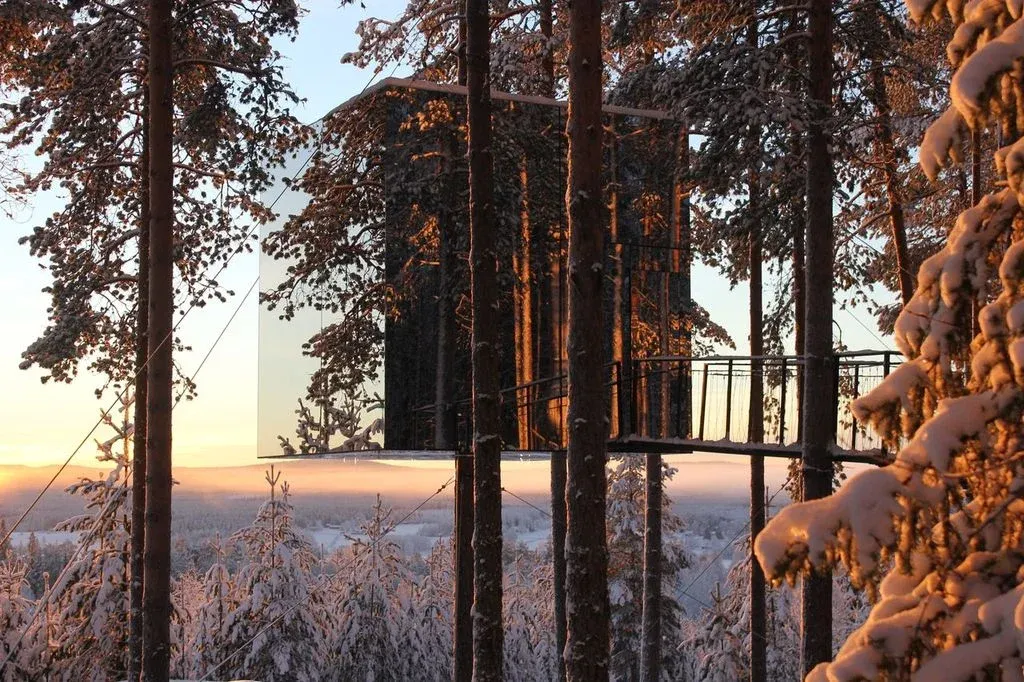
Top 3 Off-Grid Cabin Retreats in Scandinavia
Treehotel - Swedish Lapland, Sweden
Nestled 65 kilometers from Luleå in the heart of Swedish Lapland, Treehotel features architecturally stunning treehouses suspended 4-6 meters above ground. Each cabin showcases innovative Scandinavian design, from the mirrored "Cube" that reflects the forest canopy to the UFO-inspired structure that appears to hover among the pines.
The concept celebrates the forest as a cathedral, encouraging guests to reconnect with nature's rhythms.
Its amenities:
- Heated floors and eco-friendly heating systems.
- Shared sauna facilities.
- Restaurant serving local, organic cuisine.
- Guided forest walks and wildlife spotting.
Sustainable practices:
- Solar power systems are feasible.
- Rainwater collection and filtration.
- Local, organic food sourcing.
- Minimal environmental footprint construction.
- Partnership with local Sami communities.
Guests reach rooms via rope bridges and walkways. If you want a getaway here, you should book between six months and a year in advance. Peak seasons are usually winter (December to March) and summer (June to August).
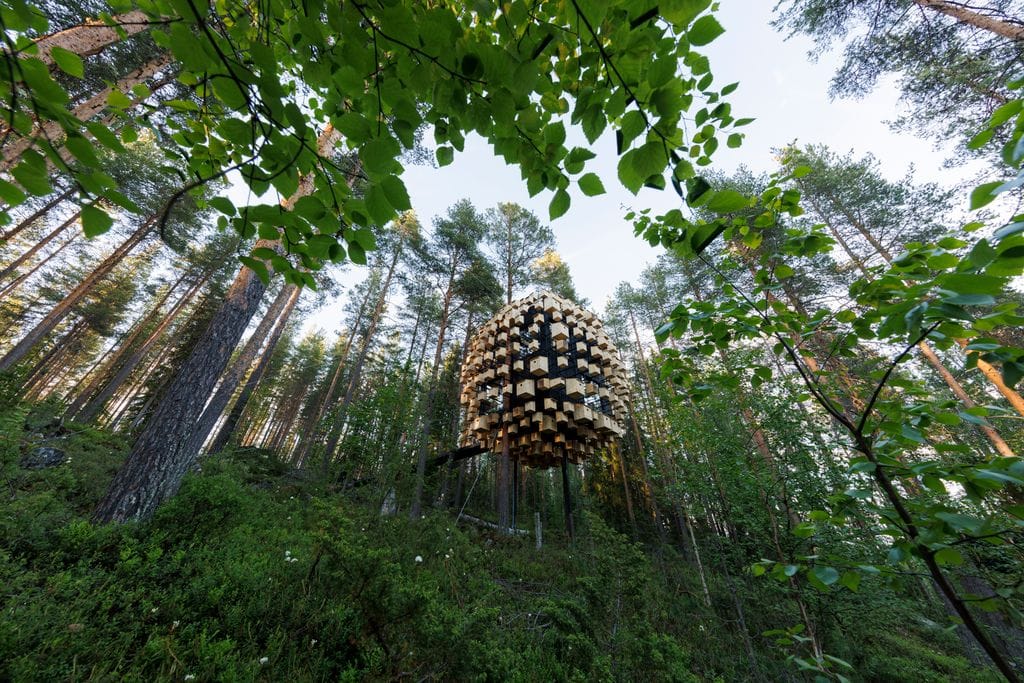
Pan Treetop Cabins: Finnskogen, Norway
Two hours from Oslo are these fully equipped cabins surrounded by virgin forest. Pan Treetop Cabins put you in touch with a quiet, largely untouched corner of the Scandinavian wilderness. These elevated cabins feature glass walls offering 360-degree forest views while maintaining privacy through strategic positioning.
There are just three cabins, two of which can accommodate six people, and the other one can accommodate four people. All cabins come equipped with water and electricity, providing a convenient and relaxing stay. The ground floor of the cabins is situated eight meters above the ground, providing visitors with an amazing view.
Amenities:
- Panoramic floor-to-ceiling windows.
- Wood-fired heating and cooking facilities.
- Bathroom with rainwater showers.
- Private forest paths and observation decks.
- Traditional Norwegian breakfast service.
- Access to cross-country skiing trails (winter).
They have Green Key certification thanks to their sustainable practices:
- Locally-sourced timber construction.
- Renewable energy systems.
- Organic waste composting.
- Native forest conservation support.
They offer year-round service, and it's recommended to book at least six months in advance.
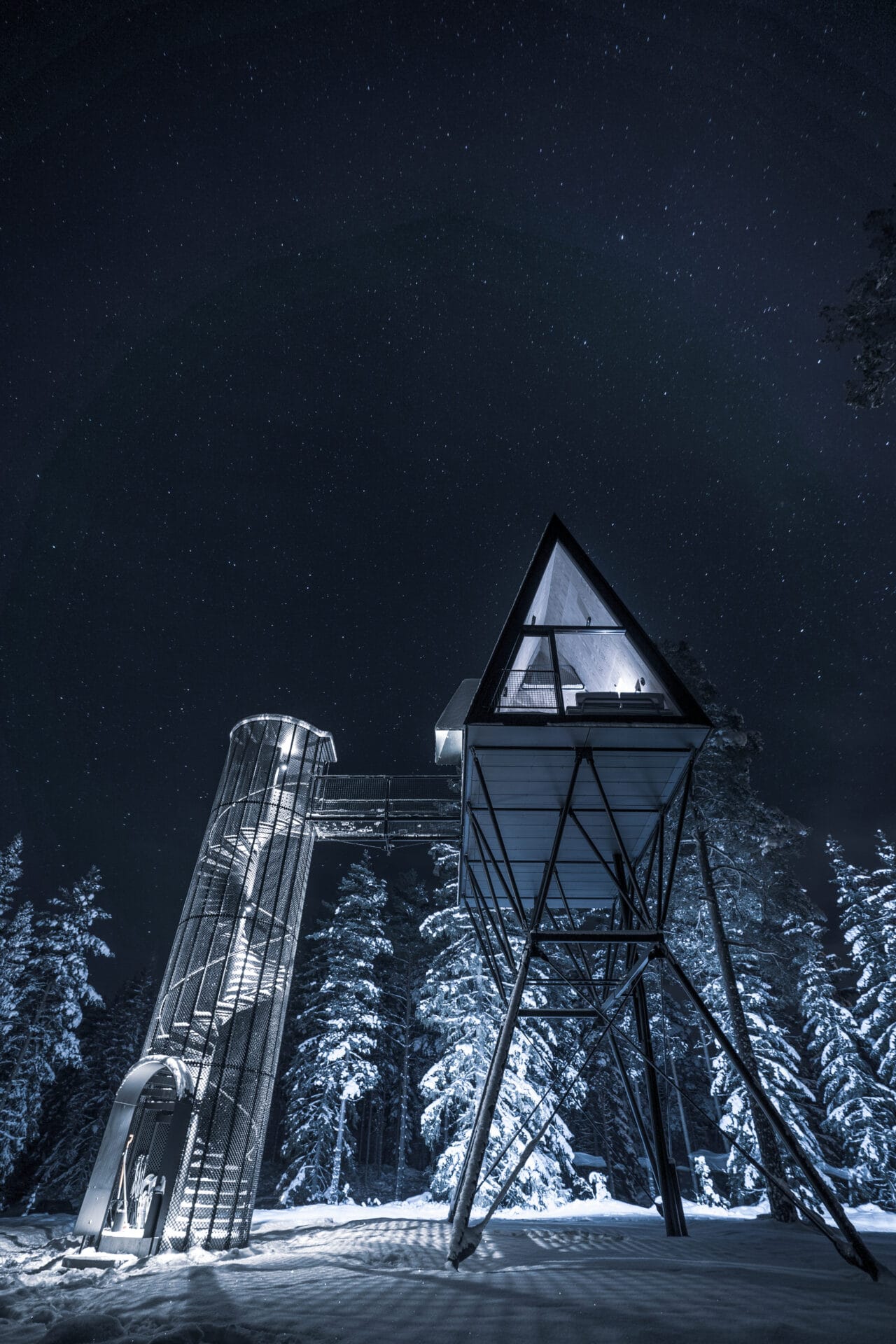
Landet Stay - Småland, Sweden
Architect-designed cabins that blend Scandinavian minimalism with cozy comfort. Landet Stay offers a year-round design retreat in the heart of nature.
Located in Sweden's Småland region, these cabins exemplify contemporary Swedish design philosophy with clean lines, natural materials, and sustainable luxury.
The experience emphasizes lagom—the Swedish concept of balanced, sustainable living.
Amenities:
- Designer furnishings and art pieces.
- Gourmet kitchens with local organic supplies.
- Private saunas and outdoor showers.
- Curated library and vinyl record collection.
- Guided nature photography workshops.
- Artisan craft workshops.
Sustainability Practices:
- Passive house energy standards.
- Local craftsperson partnerships.
- Organic garden produce.
- Waste-to-energy systems.
- Rewilding landscape projects.
Open year-round with seasonal activity variations. Includes airport transfer options and luxury picnic provisions.
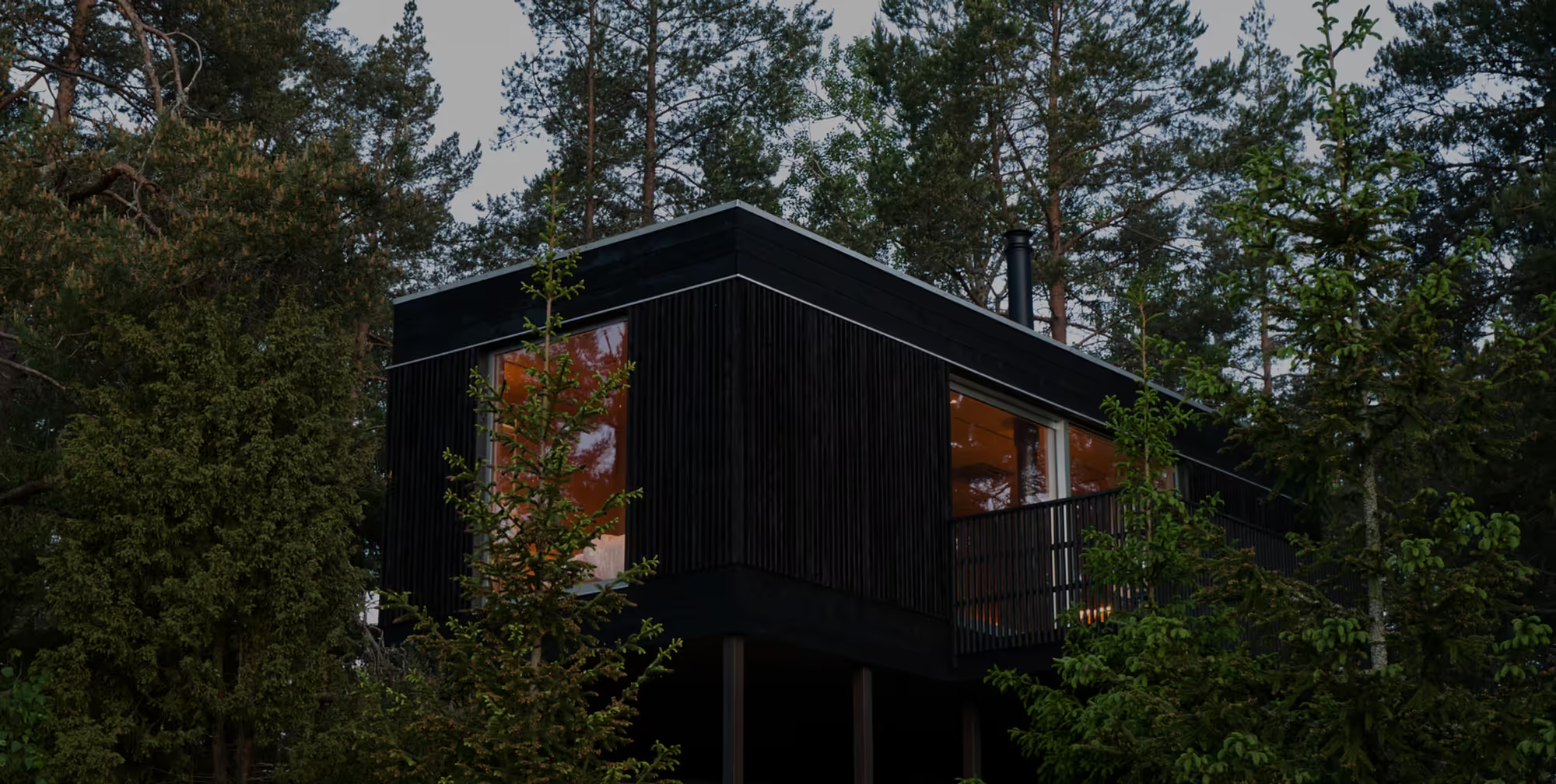
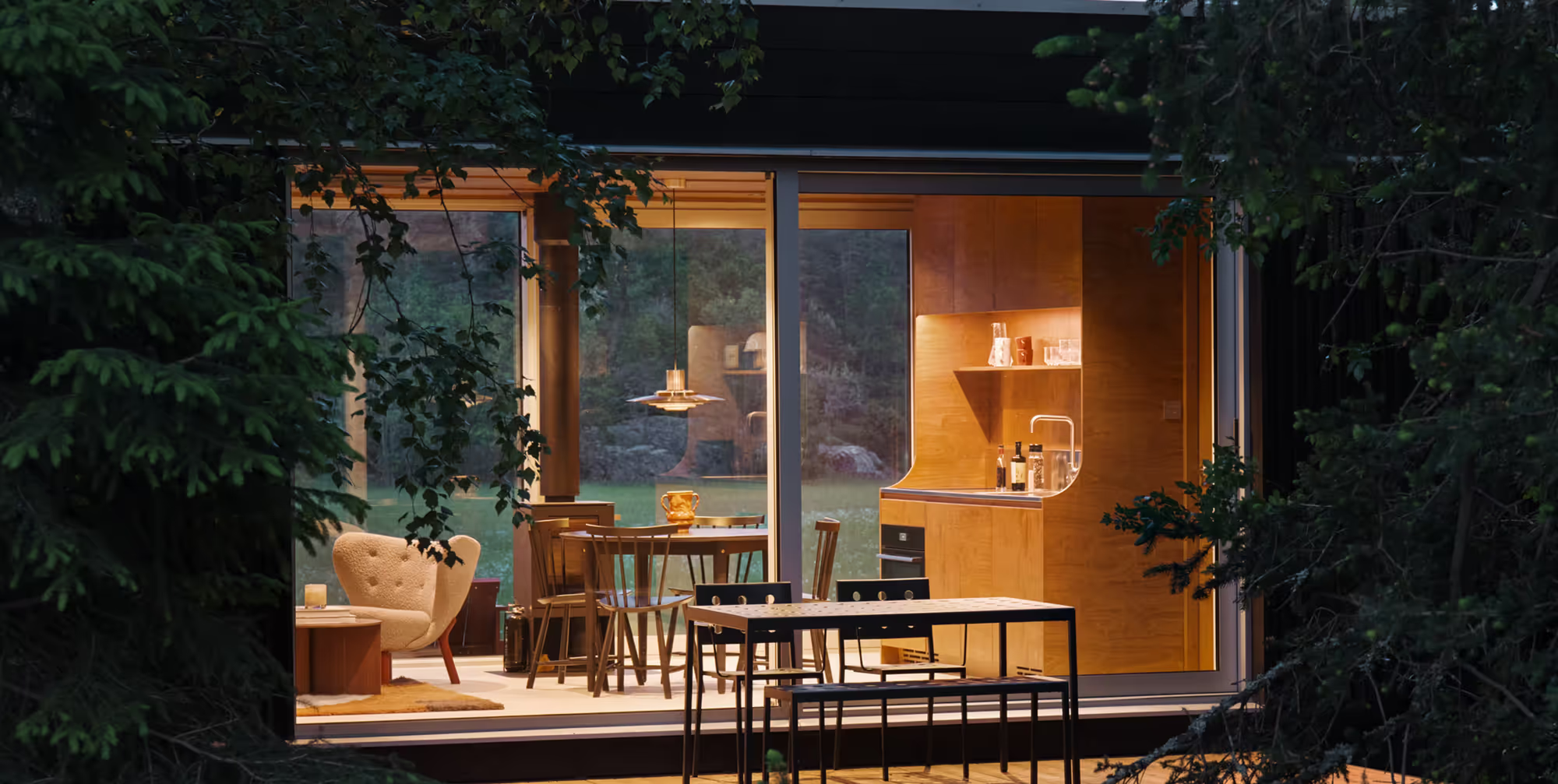
Photos by Landet Stay.
Business or accommodation? The boom in digital detox retreats
Digital detox retreats are specialized accommodations designed to help guests temporarily disconnect from technology while immersing themselves in restorative natural environments.
Retreats began in California and gained popularity in the 2010s, later spreading to the rest of the world.
Today, they are located in natural, remote, and often unspoiled settings—places where Wi-Fi coverage is intentionally limited or completely nonexistent.
Its popularity isn't coincidental. Americans spent over $287 million on digital detox in 2022, up 58% from before the pandemic.
The trend is expected to keep growing, with a 23% annual increase forecasted through 2025. Meanwhile, the Digital Detox Tourism Services Market will grow at a CAGR of 24.5% during the forecast period, with an estimated size and share crossing USD 466.58 billion by 2034.
The wellness tourism sector is experiencing unprecedented growth, with the global wellness tourism market size valued at USD 995.3 Bn in 2024 and estimated to grow at a CAGR of over 13.2% from 2025 to 2034, owing to rising focus on mental well-being.
I'm so glad you made it this far. Plan V is an independent magazine, and your donation allows me to continue doing this.
See you soon.
Thank you!
FAQS
What are digital detox retreats?
Digital detox retreats are specialized accommodations designed to help guests temporarily disconnect from technology. These retreats provide structured environments where smartphones, laptops, and other digital devices are either voluntarily surrendered or rendered unusable due to a lack of connectivity. Some of the activities performed during a digital detox are: mindful activities, nature connection, and authentic human interactions.
Why are digital detox retreats making for popular short-term rentals?
They have become increasingly popular short-term rentals because they address a growing societal need for mental health restoration and work-life balance. They offer unique, experience-based tourism that commands premium pricing due to their specialized nature and remote locations.
Also, property owners can capitalize on wellness tourism trends while promoting sustainable, low-impact travel. The limited connectivity becomes a selling point rather than a drawback, attracting guests specifically seeking escape from constant digital stimulation.
What are the benefits of digital detox retreats?
The benefits of digital detox retreat experiences include: improved sleep quality due to reduced blue light exposure, enhanced cognitive function and attention span without constant digital interruptions, lower stress and anxiety levels, deeper personal relationships through increased face-to-face interaction, boosted creativity and problem-solving abilities, improved physical health from increased outdoor activity, and greater mindfulness and present-moment awareness.
Many guests report lasting positive changes in their relationship with technology even after returning home.
How to properly do a digital detox?
Start by gradually reducing screen time in the weeks before your retreat. Set clear boundaries and expectations with work colleagues and family members about your unavailability. Choose a digital detox retreat that aligns with your comfort level—some offer complete disconnection while others allow limited emergency access. Engage fully in the provided activities like hiking, meditation, or creative workshops. Use the time for reflection, journaling, and reconnecting with personal interests that don't involve screens. Plan your re-entry carefully to maintain benefits long-term.
Do digital detoxes actually work?
Research indicates that digital detoxes can provide significant short-term benefits, including reduced stress hormones, improved sleep patterns, and enhanced cognitive performance. Long-term success depends on implementing sustainable changes to daily digital habits after the digital detox retreat ends.
Studies show that participants who develop structured re-entry plans and maintain some digital boundaries experience lasting improvements in well-being, productivity, and relationship quality. The key is viewing the retreat as a catalyst for ongoing lifestyle changes rather than a temporary escape.
What are the cons of digital detox?
The main drawbacks include initial anxiety or withdrawal symptoms as guests adjust to reduced stimulation, potential difficulty handling emergencies or urgent work matters, possible social isolation from digital social networks, and the significant cost of premium digital detox retreat experiences. Some guests experience FOMO (fear of missing out) on news, social media, or professional opportunities.
There's also the challenge of maintaining benefits after returning to regular life, and the adjustment period can be uncomfortable for those heavily dependent on digital entertainment and communication.
